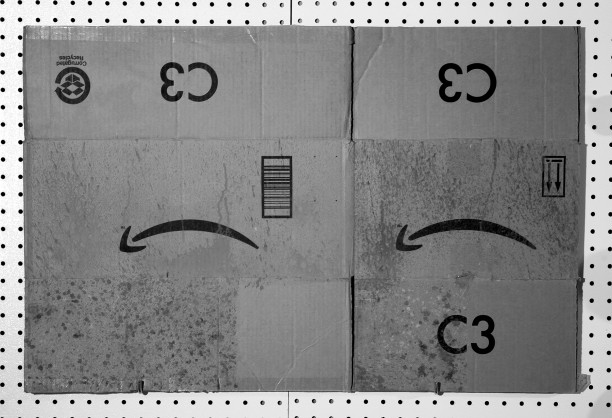Barbara Kasten and Amanda Ross-Ho Part 2
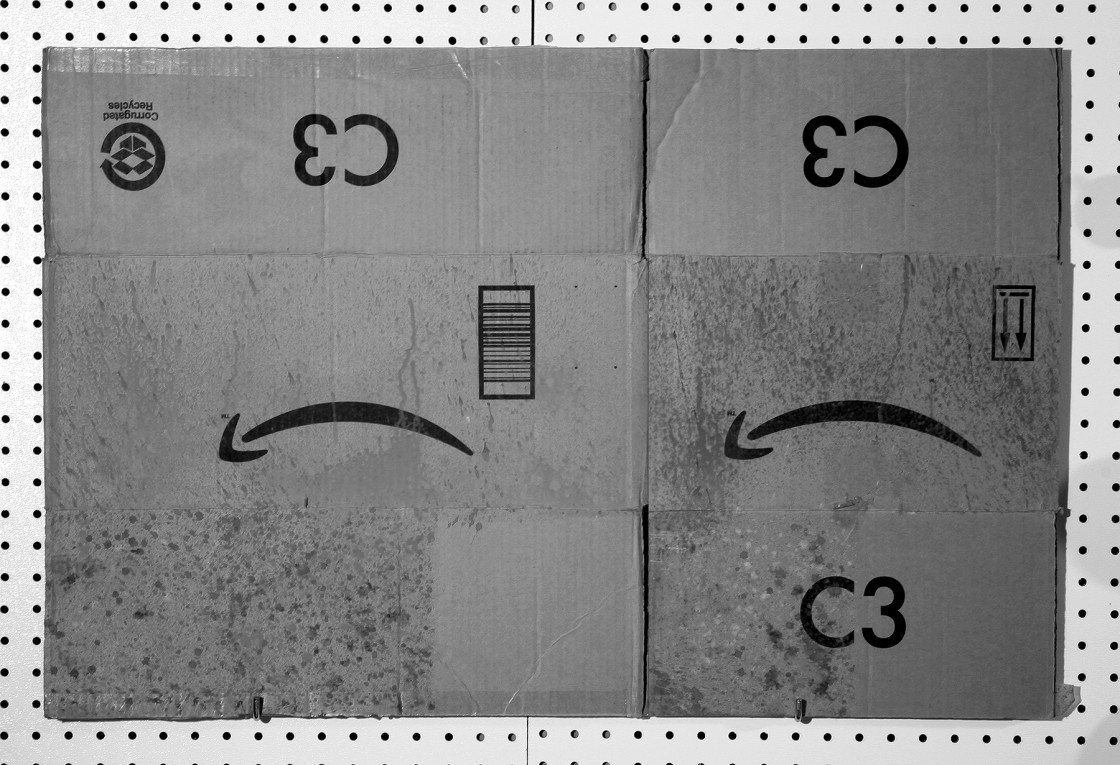
Amanda Ross-Ho, Double Tragedy Wall (detail), 2007, 3 archival ink jet prints framed and mounted, shoes, handkerchief, pegboard, necklace, sheetrock, wood, 96 x 76 in., courtesy of The Museum of Contemporary Art, Los Angeles
Amanda Ross-Ho: I wanted to ask about the role of performance and the notion of stage presence in your work. When you are producing work in the studio, even in total privacy, do you regard your actions as performative? I noticed the Barbara Kasten: Stages monograph includes many production stills that show you on-site making your Constructs series. Was this purely in the name of posterity and historicity, as documentation, or do these photographic stills operate as works for you as well?
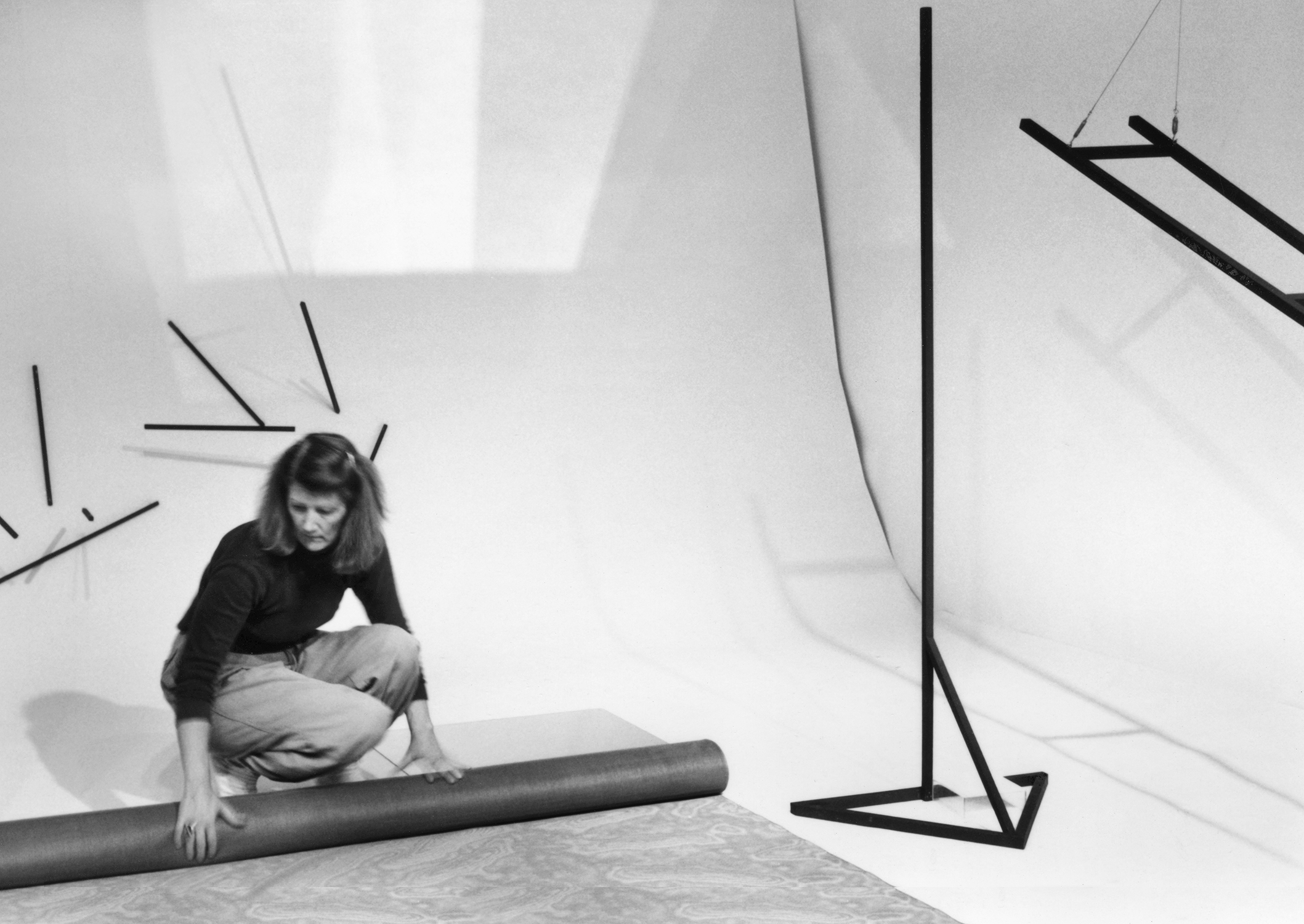 Photo documentation of Barbara Kasten installing the exhibition Centric 2: Barbara Kasten, Installation/Photographs, University Art Museum, California State University, Long Beach, 1982. Courtesy of the artist and the University Art Museum, California State University Long Beach.
Photo documentation of Barbara Kasten installing the exhibition Centric 2: Barbara Kasten, Installation/Photographs, University Art Museum, California State University, Long Beach, 1982. Courtesy of the artist and the University Art Museum, California State University Long Beach.
Barbara Kasten: The construction of the set has been part of my practice since the beginning. It is a performative act in the studio that sometimes extends into an exhibition space. I first presented a staging installation in a group show named Situational Imagery in 1975, along with photographs made in the studio. In 1982 at California State University, Long Beach, I turned half the gallery into a photographic stage set and made 8x10 Polaroids. In other gallery exhibitions, the constructions similar to ones in the studio were shown but without using them to produce photographs for the show. During those years, I was also influenced by Bauhaus interdisciplinarity. So, when I created an environment in the Capp Street Project house in San Francisco, I invited Margaret Jenkins Dance Company to perform in the space; and for the installation at the Wright State University in Dayton, Ohio, students used it for drawing sessions.
When I’m in a studio installation, I am the performer. I often feel like I'm photographing myself in it, even though I am behind the camera taking the picture. I'm more invested in the relationship of the objects in real space than I would be directing an assistant to move the objects. That solitary, interactive experience is important to me.
ARH: What I think is so interesting about what you’re saying is that, regardless of whether you appear in an image, you want all of the photographing to imply activity and imply the space of maneuver.
BK: Exactly.
ARH: I was curious, too, how you thought about the boundaries of the stage, and whether you felt that a backstage even exists? I’m interested in the holistic system of the proscenium and the peripheral spaces that flank it. Does the stage end at the edge of the frame for you, as Alex Kitnick suggests in his catalogue essay [“Use Your Illusion”]?
BK: I have different criteria for the framing of the construction as installation and for the photograph. When I’m in the middle of the spatial arrangement, my body becomes one of the objects. However, as I look at the ground glass I see an empty canvas on which I can isolate parts of the set in proportion to the frame. The edges of the photographic frame are as important to me as the relationship of the objects to each other. I like precise control of the photographic composition, but I allow the installation to be more fluid within the boundaries of the site. My reactions and choices depend upon where I am.
A question to you, then, about this process: how do you plan what you show as an installation?
ARH: It’s funny because the environment of the studio is very gray, as far as where the limits of a work end and where source material, or studio space, or the environment of production, begin. Exporting a work out of the studio is the transaction that activates the work; it’s the framing device. There’s an interesting kind of editing process for me that happens there. I’ve always been interested in the idea of negotiation between the space in which work is made and the space in which it’s presented. The work feels inextricably linked to the site of origin until it has to be physically excised from the space; and I always feel as though they’re still connected, even after the work leaves the studio and you’re looking at it in a more rarefied site, like a gallery or a museum.
I do think from the way that you’re talking about being immersed in the environments that you’re building—the sets—that it’s really less about boundaries and more about inserting framing devices. The moment of putting something into a space is a type of framing, right? It ends up being another cropping device, much like the camera operates in that way. It doesn’t omit the things beyond the frame, but it does for a moment frame a section of it—or something.
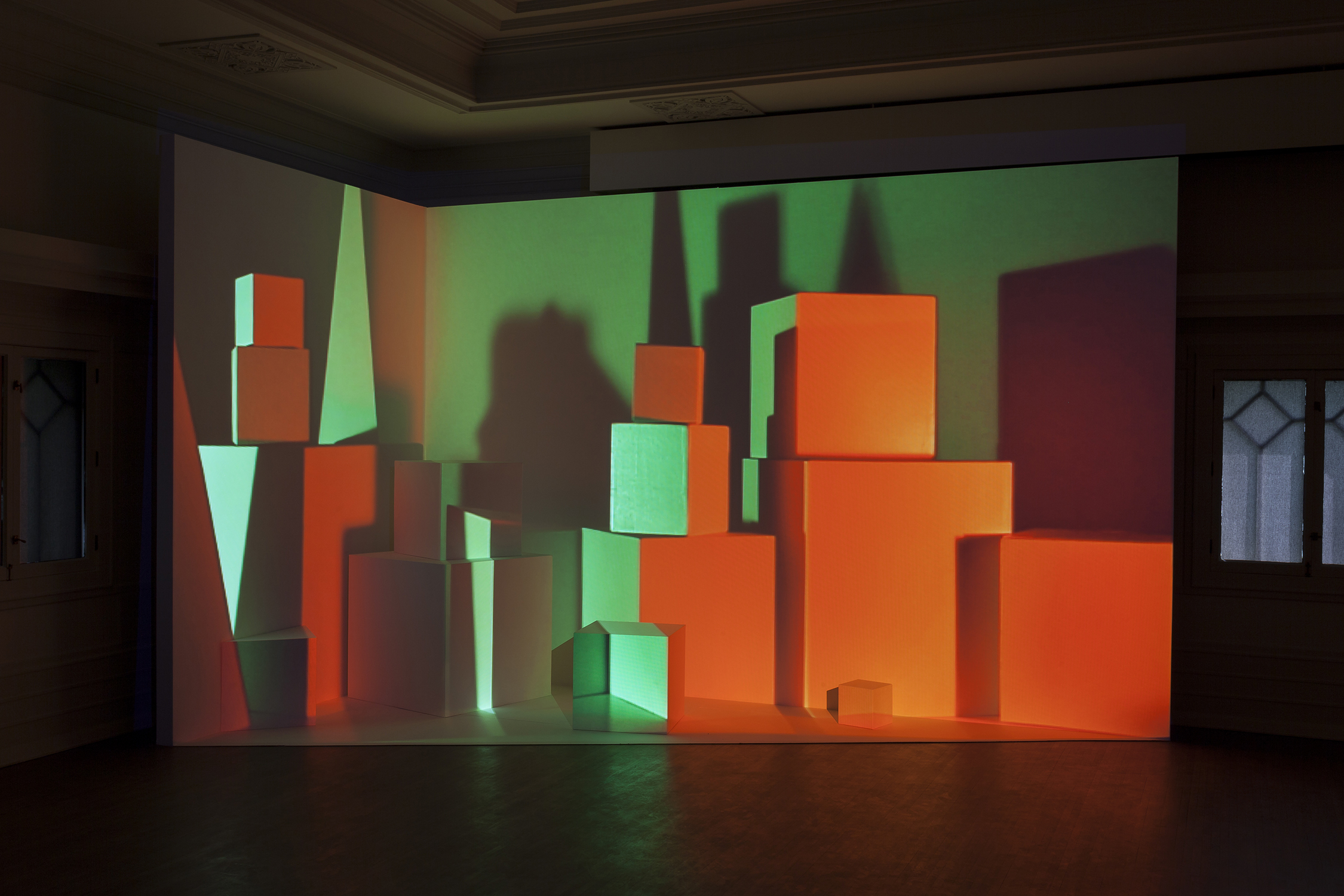
Barbara Kasten, Scenario, 2015, HD color video with plaster geometric forms, 144 × 216 × 108 in., installation view Barbara Kasten: Stages, Graham Foundation, Chicago, 2015, photo by RCH | EKH
BK: In my most recent works with video, framing is governed by the specificity of the architectural site that it is projected on. The video is the illusionistic component of a sculpture that relies on its relationship to architecture as content. In Scenario, made for the Graham Foundation in Chicago, the piece is staged as a corner of the historic building’s ballroom. Cubic forms in the video and three-dimensional solid forms that appear to be similar in scale overlap, blurring reality. In Sideways, shown at Bortolami Gallery, the video is situated on a wall that is anchored by corners. One corner wall originates the moving image and the other allows it to expand into space.
In preparation for the work, I made a model in the studio but it had to be half the size. So, of course, it was a challenge to envision a piece that's so dependent on scale. When the scale was increased to its full size on-site, it became one with the architectural environment. The intended physicality can be imagined in the process but only becomes active once the work lives in it. Its presence at the right scale in the designated site completes the process. That is the moment of reckoning.
ARH: I think about the space a lot. However, there’s no amount of planning and engineering—I think this is sort of what you’re saying—that can electrify the piece until it’s on-site. There’s this moment that happens when things plug into the space that they’re intended for or designed for, or what have you. It’s a very interesting sensation and it’s one that I’m addicted to, in fact, because I love that moment when everything aligns and becomes what it is.
BK: It becomes very theatrical.
ARH: Absolutely.
BK: I like to engage with that theatricality by creating a proscenium-like presentation. The work doesn’t offer physical entry, either, as a photograph or an installation. The viewer is placed in front of the work. On opening night, everything is in place ready to assume its role–including the audience.
ARH: It’s funny because the more that we define these terms, the more I think about how presenting something in space feels more akin to performance than to display. The works are more live than that to me, even when they’re static objects. We talked about the role of your body moving through your constructions, and you mentioned using dancers and other live performers in your work. It occurs to me to ask: do you have a performance background at all yourself, prior to making art?
BK: Oh no, not at all! In fact, it took me a long time to feel comfortable getting on stage even to talk about my work.
ARH: That’s interesting. I do, actually. I was a figure skater for many years before making art, which is a funny little biographical fact. There are so many elements of stagecraft that kind of went into that, I think it may be one origin of my interest in this sort of performative sensibility.
BK: I began to use video because the timing and sequencing of imagery add a complexity to the captured moment of my abstract photographs. I’m using motion in the same way that I use materiality. It can be stretched or broken into intervals, manipulating time to create a new identity for the subject. It can also produce reactions in the viewer because of the tempo, rhythm, or changing perspectives. When the viewer becomes involved, the piece becomes interactive. I like putting that effect into motion.
ARH: That seems like a really intentional way of making a viewer a performer in the work—by building an interactive kind of set, all of a sudden viewership is not so passive. You’re almost more of a performer in the kind of situation that you’ve put together and engineered.
BK: The viewer becomes me, in a sense, because they can enter into the spatial experience that I’ve had. I think that’s pretty interesting in and of itself—that a work can provide shared experiences for viewers and the artist. It may be the same experience or maybe not. Does it matter?
ARH: I wanted to ask you how you think of time as material? I think for both of us, I see that longevity is part of the design. The work builds an aggregated logic system, or maybe the momentum of the work increases over time, and so it becomes stronger and the logic becomes fuller–it’s built for the long game.
BK: It seems that time is evident in both of our practices. The most direct influence for me would be in the videos, where there is an obvious relationship to the passage of time. My photographs also have a connection with time that is revealed through my process. Time is an essential factor in my deliberations; the work evolves slowly to a point of feeling finished. It’s important for me to examine all possibilities. Eventually, I do allow it to be what it is, even if I look back at it later with more thoughts about change. Then it becomes another investigation. The idea of one work leading to another is integral to my process and the development of continuity in the work.
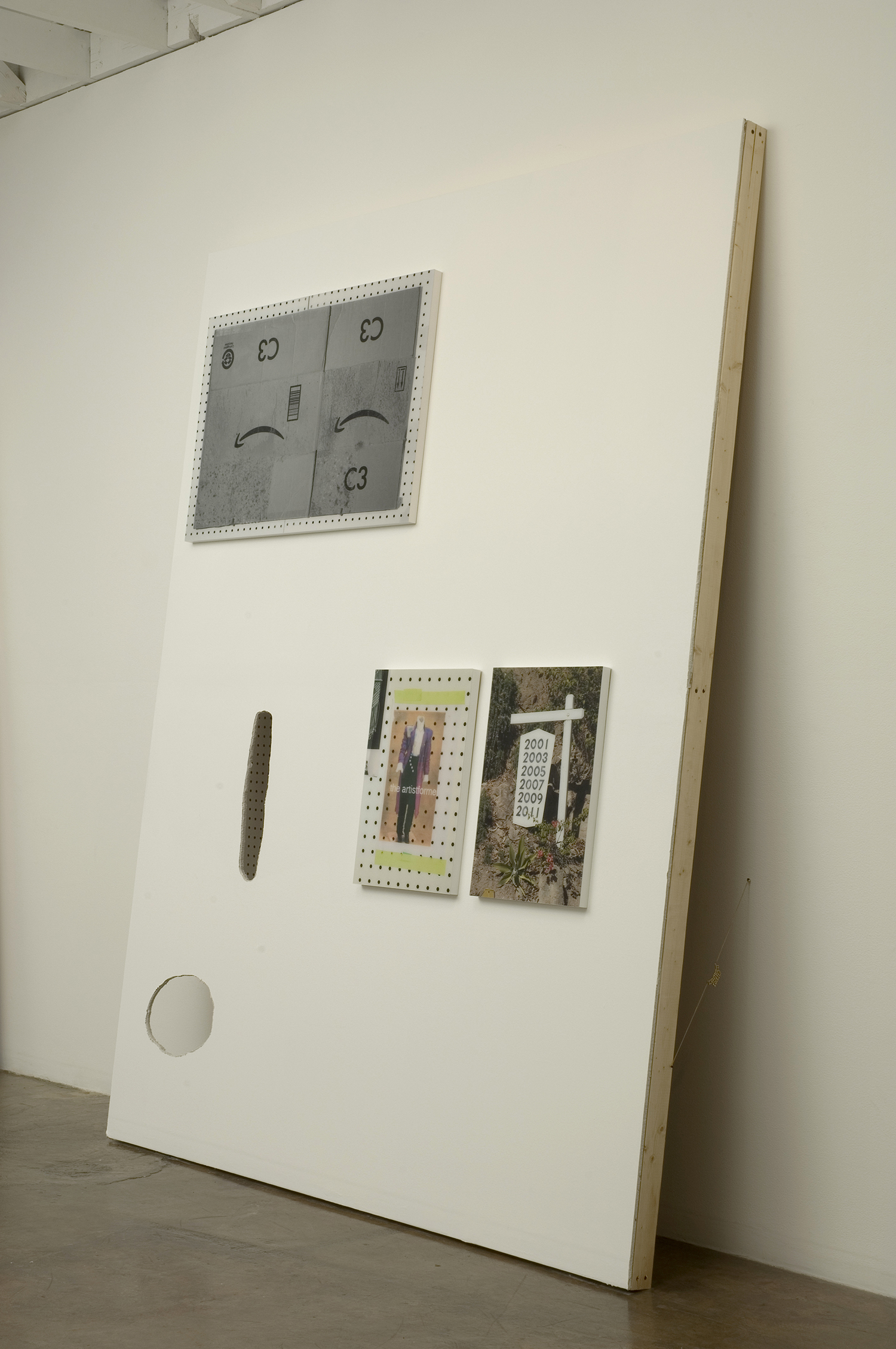
Amanda Ross-Ho, Double Tragedy Wall, 2007, 3 archival ink jet prints framed and mounted, shoes, handkerchief, pegboard, necklace, sheetrock, wood, 96 x 76 in., courtesy of The Museum of Contemporary Art, Los Angeles
ARH: I often think about the way that form mutates over time. I’ll revisit forms multiple times over a period of years because one of my interests is in building two different paces and time signatures within the work. You have the gestures that occur quickly, day-to-day, that make up the aesthetic identity or complexion of the work, and then there are other gestures that are much larger. So, I’m thinking about the long view and shaping or sculpting the work, almost in a geological sense. What that means for me is that the work mutates over time in almost imperceptible ways. What I meant earlier about the idea of longevity as a working practice is that I’m thinking: can there be these slow shifts that you’d see only when you regard the arc of the work as whole? It’s a subtle operation in the work, in many ways, and a logic that can only be proven by engaging it in longhand and in real time. In some ways, it’s intuitive, because the return to form and the idea of repetition over time, and of something mutating through the process, comes very naturally to me. I think you described it at one point, this idea of a toolkit. I think about my toolkit as a vocabulary or a language; so all of the terms remain in the work, they just kind of get shifted around and come to the surface, almost like a compost bin.
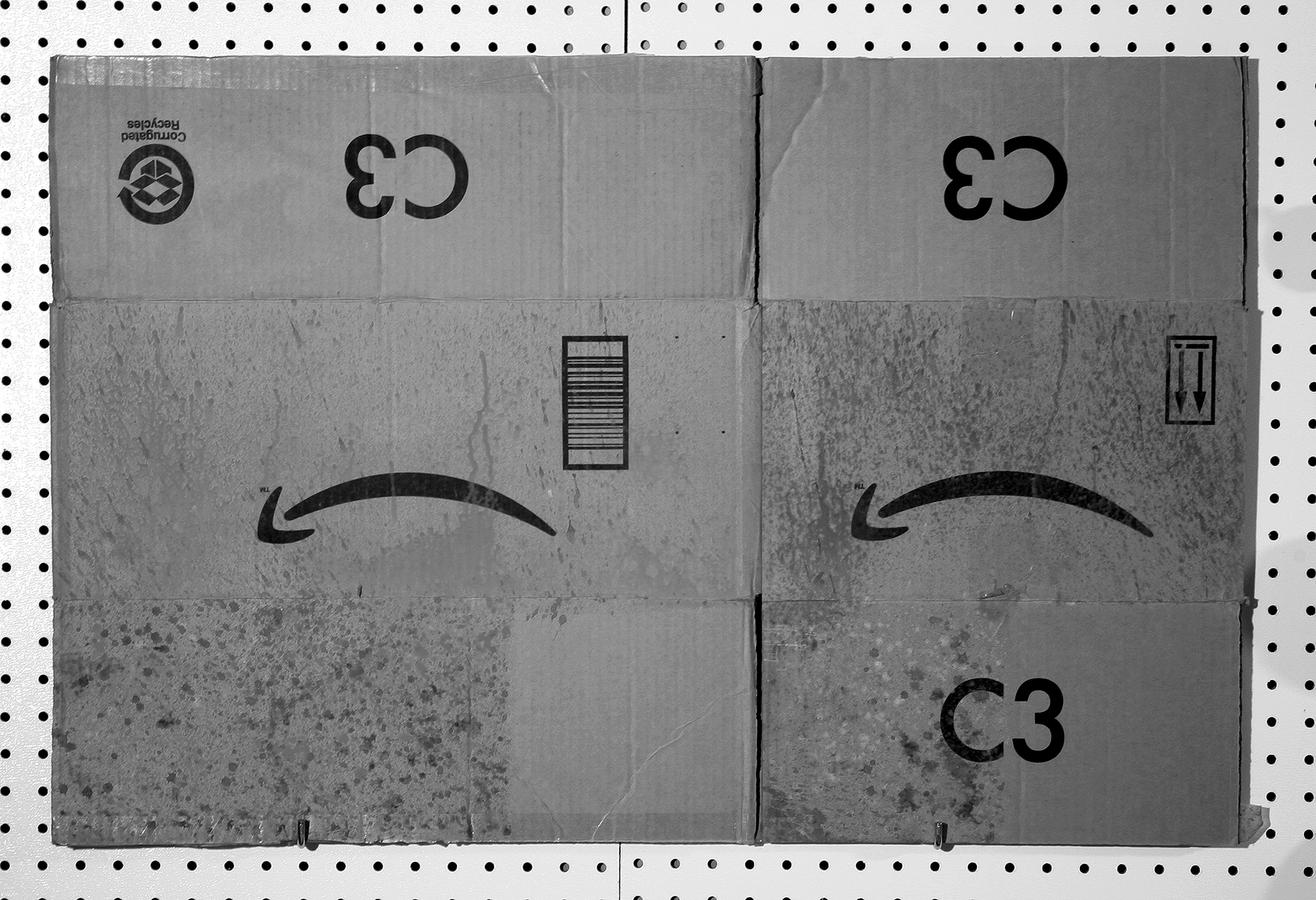
Amanda Ross-Ho, Double Tragedy Wall (detail), 2007, 3 archival ink jet prints framed and mounted, shoes, handkerchief, pegboard, necklace, sheetrock, wood, 96 x 76 in., courtesy of The Museum of Contemporary Art, Los Angeles
BK: That’s interesting because I can relate to what you’re saying. I have a toolkit too, but it’s not always about technique, procedure, or concept—it can be the actual physical object. I have a roll of screening material that I’ve used for forty years that still gives me fresh ideas for its use. The acrylic sheets that I’ve been using in several recent series are scratched and have rough, raw edges. I want the history of their existence as well as the physicality to be evident—not only as it accumulates in my work, because I’ve used some props continually for many years–but because some materials were used for more common purposes, perhaps as a container for personal or practical items, a protective surface over works of art, or a cutting board on a countertop. I love that these objects trace time and reflect the varied activities of someone else.
ARH: There is something really interesting in the way that you talk about using these industrial materials that aren’t personal and don’t necessarily carry an identity. I come back to this question: how can you embed meaning into something inanimate? This is something I’m consistently interested and invested in. I like the idea of carrying a material with you through four decades, using intimacy as a method to build meaning. What it does is it isolates the dematerialized aspects of meaning that can be embedded into a piece of window screen. Through time and through intentionality, that meaning can be made.
BK: Yes. I see that there’s a personal sense of order in your work—not chaos, but a sort of disorder. I like the way you manage to create meaning from an unusual juxtaposition of objects or combination of text. The room installation featured in your book [Amanda Ross-Ho: TEENY TINY WOMAN], the one that depicts a laboratory of carefully arranged objects, is actually a workshop set up in the gallery, right? Did you have students making things?
ARH: Yes. That was a project at The University of Texas at Austin. It was an invitation to do a project on-site and use student assistants, so we set up a production site in the museum. Rather than have a bunch of students help make my work, I decided to create an engine that would be a way of creating potential. It was called Untitled Nothing Factory, and we made all of these blank canvases, blank sheets of paper. We recycled paper from the school and then we made empty vessels. The idea was to suspend activity in this shared notion of potential, as we discussed, going towards an end point. The end point really didn’t exist, but the current moment was the thing that we were engaged in. At the end of the project, you have a massive, space-filled starting point.
BK: It was great to see the photograph of the entire room as the piece, including all the activities to be experienced there in the future. The concept incorporates the space as an active element. It’s what I’m interested in at the moment, too. It’s an interesting question: how to incorporate the physicality of space? I’ve worked with that idea in several videos by incorporating a basic architectural means of construction, such as a corner, into the content of the work. The projection activates the dimensionality and examines the functionality of a simple structure like two walls meeting.
The longer I work with structure and building processes, I find that I'm more intrigued with vernacular structures of architecture. I'm not thinking of skyscrapers, buildings, and post-modern embellishments as I did in the Architectural Sites. Those images conveyed thoughts about the power of the architect and the corporate status of the buildings. Now my interest is the minimal, basic structure that is found in the layering of construction.
ARH: In your Architectural Sites series, it definitely seems like these are about the idea of negotiating the seemingly non-negotiable external complexion of the structures. I love those pieces so much because I think that in this great way they upset the power structure of those buildings that really have that aggressive male identity. The gestures of lighting and refracting them create a new way of seeing those spaces. It inverts it to a feminine gesture. I love the simplicity of just shifting the perspective via light. It's very simple, but those images are so complex.

Barbara Kasten, Architectural Site 10, December 22, 1986, 1986, Cibachrome print, 60 x 50 in., courtesy of The Museum of Contemporary Art, Los Angeles
BK: It's another kind of examination of space. The added information that is presented with the disorienting mirrors gives a three-dimensional view, but it also slices through the architecture, as Alex Kitnik pointed out in his reference to Gordon Matta-Clark in the essay for my book. The environment is exposed to deeper examination. However, the photograph prevents you from walking into the space and reinforces the illusion. Now I’m working toward the merging of an architectural component of the actual space and the illusionistic properties of the video projection. The inclusion of sculptural objects acts as the mirrors did because an additional spatial dimension is added. The architectural element is the receptor of the moving image and also part of it.
ARH: I made a note about that Gordon Matta-Clark comparison in my notes, too. I was thinking how interesting that is because that gesture of the immediacy of that physical architectural intervention really relies on the idea of the artifact and the charged reality of that. I love that you're able to accomplish a similarly invasive dissection of the architecture through means that are just optical. I do think there's a thoughtfulness there that's different—an investigative gesture that's different than that aggressive, physical thing.
In a way, I fall between those two roads and I'm interested in oscillating between them. There are moments for me when I rely on the artifact and rely on the immediacy of something that has been directly manipulated; you can stand in front of it and see it and understand the gesture. Then, there's a moment when you realize that's what you think you're looking at, but it's actually a fiction or an illusion. It just happens to be produced physically, in most cases, rather than optically.
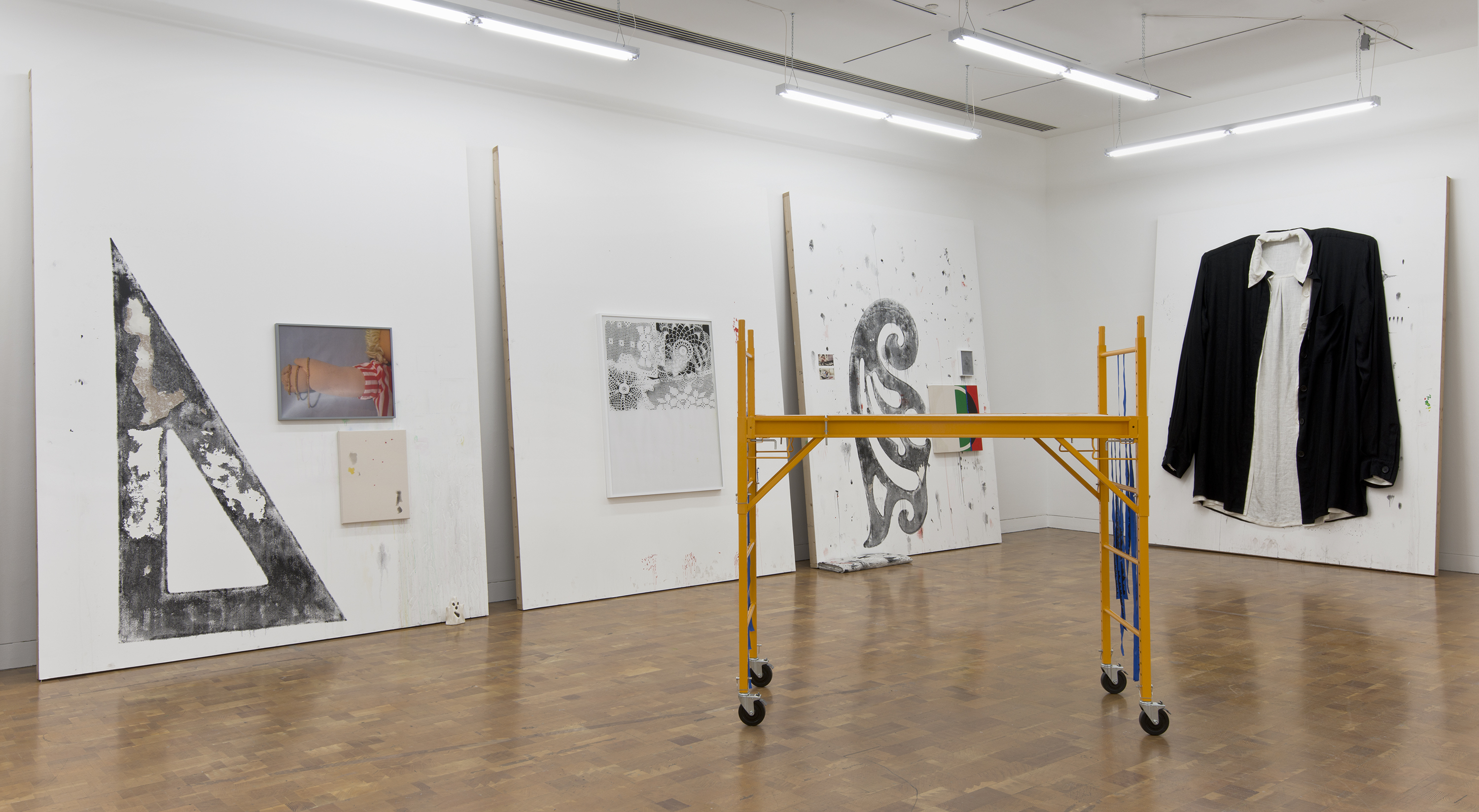
INSTALLATION VIEW OF AMANDA ROSS-HO: TEENY TINY WOMAN, JUNE 23, 2012 – OCTOBER 7, 2012 AT MOCA PACIFIC DESIGN CENTER, COURTESY THE MUSEUM OF CONTEMPORARY ART, LOS ANGELES
BK: I really find it intriguing that an object or an action has the potential to be read in different ways. Is a photograph an illusion that stirs an intellectual or observational kind of emotion? Or does it have a physical kind of connection that a sculpture or an installation can evoke? Perhaps responses to each are interchangeable and that’s why I continue to do both. I want to see from multiple directions and, hopefully, show my audience ways to do the same.
This dialogue was organized by Marco Kane Braunschweiler and edited by Stacey Allan. Special thanks to Aria Dean.
